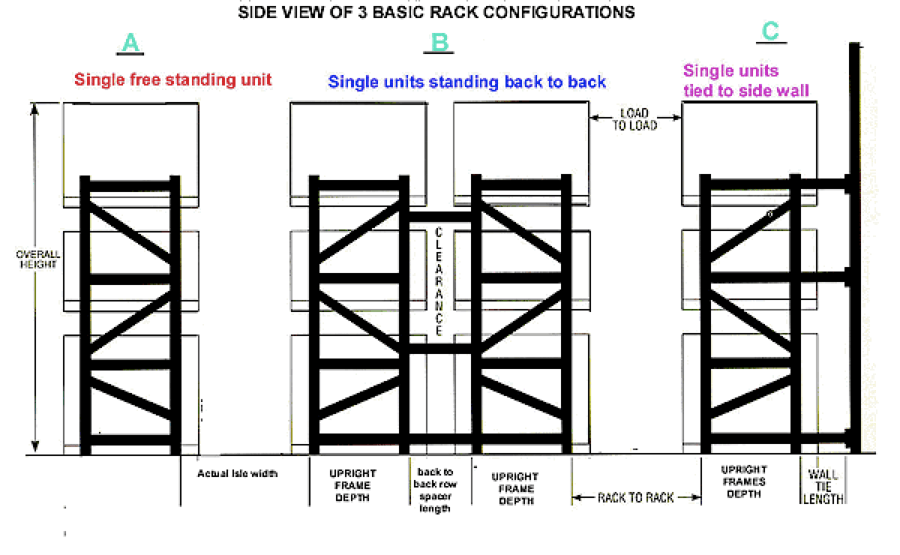Your warehouse operation is only as profitable as your ability to fulfill orders efficiently. A disorganized inventory stock can sink productivity and ultimately cause a loss at the end of the year.
Sometimes this disarray comes at the hands of managers. Those who man the floor everyday are often desensitized to the disorganization. Though they may be able to tell you where everything is housed, an auditor or outsider may see only chaos.
And while there is no shortage of articles on increasing your warehouse’s productivity, all roads lead back to one central component: investing in the right racking solution. It’s the key to organizing and understanding all aspects of your inventory so you can ensure accurate picking and on-time shipping.
Understanding The Basic Structure
Pallet rack systems are central to any distribution center. At their most basic level, they store and organize product until it’s ready to ship.
The steel structures are comprised of upright frames made from posts and cross braces that are interconnected by horizontal beams. Between each upright frame, beams support the actual pallets within what’s known as a ‘bay’. The higher the frames and further spaced the beams, the more pallet bays available; however, the average rack height is about 25 feet.
Beams and frames can be connected in one of two ways. The first is when each component is bolted to the upright frames. The second is through an interlocking system that uses a slotted connection to secure each piece.
The bifurcation continues with high-density and low-density: the two main categories of most rack systems. The former is designed primarily for storage, which can limit access. The latter increases inventory access, but may ultimately store fewer products.
Configuring A Simple Pallet Rack System
With a few key pieces of information you can begin configuring your basic pallet racking.
- Product weight and dimensions: Start with the largest, heaviest item in your inventory and work your way back. Keep the width, depth and height of your pallets on hand as you begin your planning. Just be sure to build in a little room for loading/unloading.
- Shelving Sizes: The width and total capacity of your pallets will determine what size beam your require. In total there will be two per shelf: a front and rear rack beam to keep the pallet load balanced. Height and depth dictate the number of shelf levels and corresponding uprights.
- Total: After adding the total number of beams and uprights your storage configuration will resemble one of the following pallet rack layout styles: free standing, center connected rows, or wall supported single row.

Image Courtesy of: SFJ Blog
Whether you need upright frames for vertical storage or load beams to store heavy cargo, machinery and other weighted objects, Rack Express has you covered.
We can help you figure out your storage needs and the physical requirements of your business before you invest in our pallet rack system.
